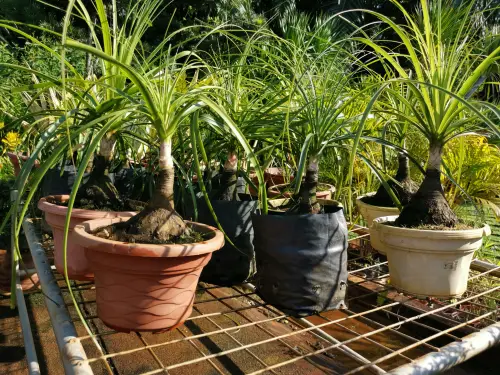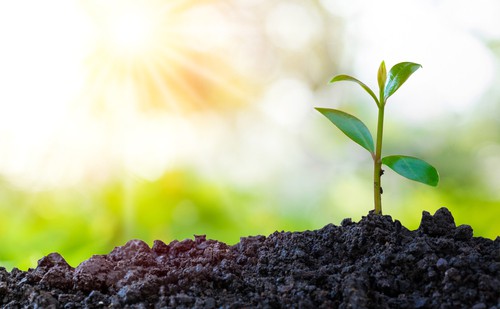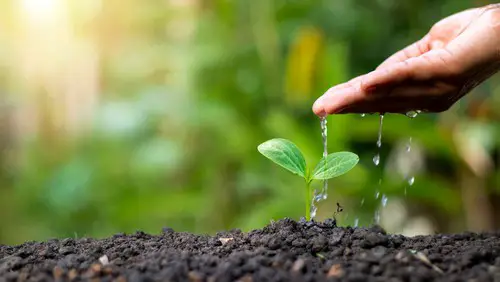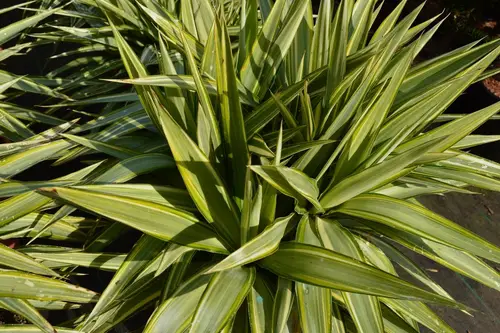Yucca plants are popular ornamental plants that can add a touch of greenery to any indoor or outdoor space. However, if you notice your yucca plant turning yellow, it may be a sign that something is wrong.
Yellowing yucca leaves can indicate a range of issues, from overwatering to pest infestations, and it is important to identify the cause in order to treat the problem effectively.
Understanding yucca plants is the first step in figuring out why your yucca plant is turning yellow. Yuccas are desert plants that are adapted to hot, dry climates. They are known for their thick, sword-shaped leaves and their ability to store water in their stems and roots.
While they are generally low-maintenance plants, yuccas can be sensitive to overwatering and other environmental stressors that can cause their leaves to turn yellow.
Common causes of yellowing yucca leaves include overwatering, poor drainage, lack of sunlight, and pest infestations. In some cases, yellowing leaves may be a natural part of the plant’s growth cycle, especially if the leaves are older or towards the bottom of the plant.
However, if the yellowing is widespread or accompanied by other symptoms, such as wilting or brown spots, it is likely a sign of a more serious issue. A detailed examination of the plant can help you identify the cause of the problem and take steps to treat it effectively.
Key Takeaways
- Yucca plants are desert plants that are adapted to hot, dry climates.
- Common causes of yellowing yucca leaves include overwatering, poor drainage, lack of sunlight, and pest infestations.
- A detailed examination of the plant can help you identify the cause of the problem and take steps to treat it effectively.
Also read:
Understanding Yucca Plants

Characteristics of Yucca
Yucca plants are a type of succulent that are native to arid regions of the Americas and the Caribbean. They are known for their sword-shaped leaves and tall, spiky flower stalks. Yucca plants are drought-resistant and can survive in a variety of conditions, making them a popular choice for both indoor and outdoor gardens.
One of the most distinctive features of yucca plants is their leaves. They are long and narrow, with sharp points at the end. The leaves are typically green or blue-green in color, but some varieties have variegated leaves with stripes or spots of yellow or white.
Yucca plants also produce tall, spiky flower stalks that can reach up to 10 feet in height. The flowers are usually white or cream-colored, and they have a sweet, delicate fragrance. After the flowers fade, the plant produces seed pods that can be harvested and planted to grow new yucca plants.
Ideal Conditions for Yucca
Yucca plants thrive in dry, sunny conditions with well-draining soil. They are drought-resistant and can survive long periods without water, but they do need some moisture to grow and thrive. When watering yucca plants, it is important to allow the soil to dry out completely between waterings to prevent root rot.
Indoor yucca plants should be placed in a bright, sunny location, such as a south-facing window. They can also be grown outdoors in warm, sunny climates, but they may need to be protected from frost and cold temperatures.
Yucca plants are hardy and low-maintenance, making them a popular choice for houseplants and outdoor gardens alike. With the right care and conditions, they can thrive for many years and add a touch of exotic beauty to any space.
Why Is My Yucca Plant Turning Yellow – 5 Common Problems
Yucca plants are known for their hardiness and ability to survive in tough conditions. However, they are not immune to problems, and yellowing leaves are a common issue that can arise. Here are some of the most common causes of yellowing yucca leaves:
1. Overwatering and Underwatering
One of the most common causes of yellowing yucca leaves is overwatering or underwatering. Yucca plants prefer dry soil and are adapted to extremely dry climates. If the soil is too wet, the roots can begin to rot, causing the leaves to turn yellow.
On the other hand, if the soil is too dry, the leaves can also turn yellow and eventually fall off. It is important to water yucca plants sparingly and allow the soil to dry out between waterings.
2. Lack of Adequate Light

Yucca plants require bright, direct sunlight to thrive. If they are not getting enough light, the leaves can turn yellow and eventually fall off. If your yucca plant is not receiving enough light, try moving it to a sunnier location.
3. Improper Soil Conditions
Yucca plants prefer well-draining soil that is slightly acidic. If the soil is too alkaline or too compacted, the roots can become stressed, leading to yellowing leaves. To prevent this, make sure to plant your yucca in well-draining soil and avoid using heavy, clay soils.
4. Temperature Stress
Yucca plants are hardy and can tolerate a wide range of temperatures. However, extreme temperatures can stress the plant and cause the leaves to turn yellow. If your yucca plant is exposed to extreme heat or cold, move it to a more moderate location.
5. Pests and Diseases
Finally, pests and diseases can also cause yellowing yucca leaves. Common pests that can affect yucca plants include spider mites, mealybugs, and scale insects. If you notice any signs of pests or diseases, treat the plant with an appropriate insecticide or fungicide.
By identifying the cause of yellowing yucca leaves, you can take steps to correct the problem and keep your plant healthy and vibrant.
Detailed Examination of Causes
Yucca plants can turn yellow due to a variety of reasons. Here are some of the most common causes:
1. Overwatering
Overwatering is one of the most common causes of yellow yucca leaves. When the yucca plant is watered too frequently or planted in a soil that does not drain well, the roots begin to rot, and the plant cannot absorb nutrients properly. This can cause the leaves to turn yellow and eventually brown.
To avoid overwatering, it is recommended to water the yucca plant only when the soil is completely dry.
2. Underwatering

Underwatering is another common cause of yellow yucca leaves. When the plant does not receive enough water, it becomes dehydrated, and the leaves start to wilt and turn yellow. To prevent underwatering, it is important to water the yucca plant thoroughly and consistently, but not too frequently.
3. Sunburn
Yucca plants need plenty of sunlight to thrive, but too much direct sunlight can cause sunburn, which can result in yellow leaves. This is more common in the summer months when the sun is stronger. To prevent sunburn, it is recommended to place the yucca plant in a location that receives bright, indirect sunlight.
4. Insufficient Light
Yucca plants can also turn yellow if they do not receive enough light. This can happen if the plant is placed in a location that is too dark or if it is shaded by other plants. To prevent insufficient light, it is recommended to place the yucca plant in a location that receives bright, indirect light.
5. Soil and Drainage
The soil and drainage can also affect the health of the yucca plant. Yucca plants prefer well-draining soil that is not too moist. If the soil is too wet or does not drain well, the roots can become waterlogged, leading to root rot and yellow leaves.
To prevent this, it is recommended to plant the yucca in a pot with drainage holes and use well-draining soil.
6. Humidity
Yucca plants prefer low humidity and can be susceptible to yellow leaves if the air is too moist. This is more common in humid climates or if the plant is placed in a location that is too humid, such as a bathroom. To prevent this, it is recommended to place the yucca plant in a location with low humidity or use a dehumidifier.
7. Temperature Stress
Yucca plants can also experience temperature stress if they are exposed to extreme temperatures, such as cold drafts or hot, dry air. This can cause the leaves to turn yellow and eventually brown.
To prevent temperature stress, it is recommended to place the yucca plant in a location with a consistent temperature and avoid exposing it to extreme temperatures.
8. Pests and Diseases
Yucca plants can also be affected by pests and diseases, such as spider mites, aphids, scale, mildew, and fungal diseases. These can cause the leaves to turn yellow and eventually brown. To prevent pests and diseases, it is recommended to regularly inspect the yucca plant for signs of infestation and treat it promptly if necessary.
How to Treat a Yellowing Yucca Plant

Yucca plants are known for their hardiness and ability to tolerate extreme conditions. However, yellowing leaves on a yucca plant can be a sign of stress or disease. In this section, we will discuss some of the common causes of yellowing yucca plants and how to treat them.
1. Correcting Watering Issues
One of the most common reasons for yellowing leaves on a yucca plant is improper watering. Overwatering can lead to root rot, while underwatering can cause the plant to dry out and wilt.
To correct watering issues, it is important to check the soil moisture level regularly. Yucca plants prefer well-draining soil and do not like to sit in water. If the soil is boggy, it may be necessary to repot the plant in a well-draining soil mix that contains sand or perlite.
2. Adjusting Light Exposure
Yucca plants require bright, indirect light to thrive. If a yucca plant is not getting enough light, its leaves may turn yellow and drop off. To correct light exposure issues, it may be necessary to move the plant to a brighter location or provide supplemental light with a grow light.
3. Improving Soil and Drainage
Yellowing leaves on a yucca plant can also be a sign of nutrient deficiencies. Yucca plants require well-draining soil that is rich in nutrients. If the soil is lacking in nutrients, it may be necessary to fertilize the plant with a balanced fertilizer.
However, be careful not to apply too much fertilizer, as this can lead to salt buildup in the soil and cause yellowing leaves.
4. Controlling Temperature
Yucca plants prefer warm temperatures and do not like to be exposed to extreme cold or heat. If a yucca plant is exposed to temperatures below 50°F or above 90°F, its leaves may turn yellow and drop off.
To correct temperature issues, it may be necessary to move the plant to a more suitable location or provide additional insulation in colder months.
5. Addressing Pests and Diseases
Yellowing leaves on a yucca plant can also be a sign of pest or disease infestations. Common pests that can affect yucca plants include spider mites, mealybugs, and scale insects.
To control pests, it may be necessary to apply an insecticide or use a shower to wash the plant and remove pests. Yellowing leaves can also be a sign of fungal or bacterial infections. To treat these infections, it may be necessary to apply a fungicide or prune affected leaves.
Preventive Measures for a Healthy Yucca Plant
Keeping a yucca plant healthy requires proper care and maintenance. Here are a few preventive measures to ensure a healthy yucca plant.
1. Proper Watering Schedule

Overwatering or underwatering can cause yellowing of yucca leaves. It is important to water the plant according to its needs. Yucca plants prefer to dry out between watering sessions.
In spring and summer, water the plant once a week. In winter, reduce watering to every two weeks. Always check the soil moisture level before watering the plant.
2. Appropriate Light Conditions
Yucca plants require bright light to thrive. Place the plant in a spot where it receives direct sunlight for at least 6 hours a day. If the plant is indoors, place it near a south-facing window.
However, avoid exposing the plant to direct sunlight during the hottest part of the day. If the plant is outdoors, provide some shade during the hottest part of the day.
3. Suitable Soil and Pot
Yucca plants prefer well-draining soil. Use a soil mix that contains sand, perlite, or vermiculite to improve drainage. The pot should have drainage holes to prevent water from accumulating at the bottom. Choose a pot that is slightly larger than the root ball of the plant. Avoid using a pot that is too large, as it can retain excess moisture.
4. Regular Monitoring and Care
Regular monitoring and care can prevent yellowing of yucca leaves. Check the plant regularly for signs of pests, diseases, or transplant shock. Remove any dead or yellowing leaves to promote new growth.
Fertilize the plant twice a year, once in spring and once in summer. Use a time-release fertilizer that is suitable for yucca plants. Maintain moderate humidity levels around the plant.
By following these preventive measures, one can ensure a healthy yucca plant. Gradual changes in growing conditions and regular care can keep the plant healthy and free from yellowing leaves.
Frequently Asked Questions

How do you fix yellow leaves on yucca?
Yellow leaves on a yucca plant can be fixed by identifying the cause of the problem. If the yellow leaves are caused by overwatering, then reducing the amount of water the plant receives can help.
If the yellow leaves are caused by lack of sunlight, then moving the plant to a brighter location can help. If the yellow leaves are caused by nutrient deficiencies, then fertilizing the plant can help.
What does an overwatered yucca look like?
An overwatered yucca plant may have yellow leaves that are soft and mushy to the touch. The stem may also appear to be rotting and the plant may have a foul odor.
What causes yellowing of leaves on yucca plant?
Yellowing of leaves on a yucca plant can be caused by a variety of factors, including overwatering, lack of sunlight, nutrient deficiencies, pests, and diseases.
How do you revive a dying yucca plant?
Reviving a dying yucca plant involves identifying the cause of the problem and taking appropriate action. If the plant is overwatered, reducing the amount of water it receives can help.
If the plant is not receiving enough sunlight, moving it to a brighter location can help. Fertilizing the plant can also help if the yellowing is caused by nutrient deficiencies.
Should I remove yellow yucca leaves?
Yes, it is recommended to remove yellow yucca leaves as they are a sign of a problem with the plant. Removing the yellow leaves can help the plant focus its energy on healthy growth.
Why is my yucca plant turning brown?
A yucca plant may turn brown due to a variety of factors, including overwatering, underwatering, lack of sunlight, pests, and diseases. Identifying the cause of the problem and taking appropriate action can help revive a brown yucca plant.

Hey, I’m Lisa and I’ve been an avid gardener for over 30 years. I love writing, talking and living in the garden! Feel free to connect with me on my socials below


